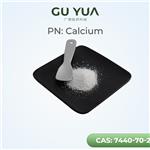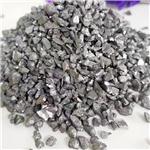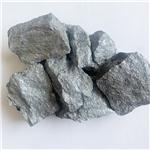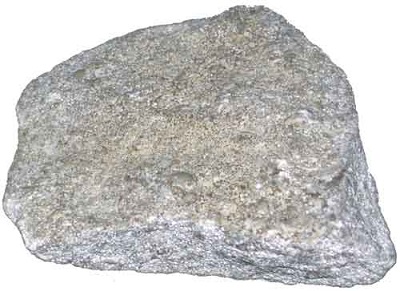- Calcium
-

- $10.00 / 1kg
-
2024-03-08
- CAS:7440-70-2
- Min. Order: 1kg
- Purity: 99%
- Supply Ability: 1000kg
- Calcium
-

- $200.00 / 1kg
-
2022-11-08
- CAS:7440-70-2
- Min. Order: 0.5kg
- Purity: 99.9%
- Supply Ability: 10000
- Calcium
-

- $200.00 / 1kg
-
2022-11-08
- CAS:7440-70-2
- Min. Order: 0.5kg
- Purity: 99.9%
- Supply Ability: 10000
Related articles - What's the flame color of Calcium?
- ?Calcium salts produce an orange flame. However, the color may be muted, so it can be hard to distinguish between the yellow o....
- Jan 25,2024
- What is Calcium used for
- Calcium, chemical symbol Ca, atomic number 20, and relative atomic mass (i.e., atomic weight) 40.078, is the third element of ....
- Sep 29,2019
|
| | Calcium Basic information |
| | Calcium Chemical Properties |
| Melting point | 850 °C(lit.) | | Boiling point | 1484 °C(lit.) | | density | 1.54 g/mL at 25 °C(lit.) | | RTECS | EV8040000 | | storage temp. | water-free area | | solubility | reacts with H2O; insoluble in benzene | | form | pieces | | Specific Gravity | 1.54 | | color | Silver-white | | Odor | Odorless | | resistivity | 3.5 μΩ-cm, 20°C | | Water Solubility | reacts with H2O, alcohols, dilute acids to evolve H2 [MER06] | | Sensitive | air sensitive, moisture sensitive | | Merck | 13,1644 | | BRN | 4241647 | | Stability: | Stable, but reacts with water to release hydrogen and produce calcium hydroxide. Incompatible with strong oxidizing agents, alcohols, moisture. | | CAS DataBase Reference | 7440-70-2(CAS DataBase Reference) | | EPA Substance Registry System | Calcium (7440-70-2) |
| | Calcium Usage And Synthesis |
| Description | Calcium is a silvery-white metal when freshlycut, which tarnishes to a blue-gray color in air. It can alsobe found as a powder. Molecular weight=40.1; Specificgravity (H2O:1)=1.54; Boiling point=1485℃; Freezing/Melting point=849℃. Hazard Identification (based onNFPA-704 M Rating System): Health 3, Flammability 1,Reactivity 2. Reacts with water. | | Chemical Properties | Calcium is a silver-white metal, somewhat malleable and ductile; stable in dry air, but in moist air or with water reacts to form calcium hydroxide and hydrogen gas; when heated burns in air to form calcium oxide emitting a brilliant light. Discovered by Davy in 1808.
There are six stable isotopes, 40Ca, 42Ca, 43Ca, 44Ca, 46Ca, and 48Ca, with a predomination of 40Ca. In terms of abundance, calcium ranks fifth among the elements occurring in the earth’s crust, with an average of 3.64% calcium in igneous rocks. In terms of content in seawater, the element ranks seventh, with an estimated 1,900,000 tons of calcium per cubic mile (400,000 metric tons per cubic kilometer) of seawater. | | Chemical Properties | Calcium is a silvery-white metal when freshly cut, which tarnishes to a blue-gray color in air. It can also be found as a powder.

Calcium cations (Ca2+ ) and calcium salts are among the most commonly encountered substances in water, arising mostly from dissolution of minerals. Calcium often is the most abundant cation in river water. Among the most common calcium minerals are the two crystalline forms of calcium carbonate-calcite and aragonite (CaCO 3 , limestone is primarily calcite), calcium sulfate (the dehydrated form, CaSO4 , is anhydrite; the hydrated form, CaSO4.2H2O, is gypsum), calcium magnesium carbonate (CaMg(CO3) 2 , dolomite), and, less often, calcium fluoride (CaF2 , fluorite). | | Physical properties | Bright, silvery-white metal; face-centered cubic crystal structure (α = 0.5582 nm) at ordinary temperatures, transforming to body-centered cubic form (α = 0.4407) at 430°C; density 1.54 g/cm3 at 20°C; hardness 2 Mohs, 17 Brinnel (500 kg load); melts at 851°C; vaporizes at 1,482°C; electrical resistivity 3.43 and 4.60 microhm-cm at 0° and 20°C, respectively; modulus of elasticity 3-4x106 psi; mass magnetic susceptibility +1.10x10-6 cgs; surface tension 255 dynes/cm; brick-red color when introduced to flame (flame test); standard reduction potential E° = -2.87V. | | Occurrence | A few calcium compounds, such as calcium oxide and calcium carbonate have been known since ancient times. The metal was isolated by Davy in 1808. Earlier its amalgam was prepared by Berzelius and Pontin. Calcium is the fifth most abundant element in the earth’s crust, constituting 4.15 % by weight. Its concentration in sea water is 412 mg/L. Calcium is a highly reactive metal and is never found in free elemental form. Its compounds, however,are widely distributed in nature. Some of its common ores are limestone (CaCO3), gypsum (CaSO4?2H2O), fluorite (CaF2), anorthite (CaAl2Si2O8) and apatite (Ca5FP3O12). It also occurs in living matter, as an essential element in bones, teeth, shell, corals, and plant leaves. It constitutes about 2% of body weight, found mostly in bones and teeth. Its concentration in the blood is about 100 mg/L, found in blood proteins and serum.
The few limited applications of calcium are mostly in metallurgy. It is used to produce alloys with aluminum, lead, beryllium, copper, silicon, and other metals; as a desulfurizer, decarburizer, and deoxidizer for ferrous and nonferrous alloys; for removal of bismuth from lead; and as a reducing agent for zirconium, uranium, thorium, and other metals. Minor, non-metallurgical applications include dehydration of organic solvents; purification of helium, argon, and other inert gases to remove nitrogen and other impurities; and as a “getter” for residual gases in vacuum tubes. Calcium compounds have numerous applications (see individual compounds). | | Uses | Calcium is largely used in the production of steel however it may also be applied to various health treatments involving the calcium-channel and anti-depressant activity. In addition it may be a necessary supplement in fracture healing of bones in mammals. | | Uses | Calcium is used as a deoxidizer for copper,steel, and beryllium in metallurgy; to hardenlead for bearing; and in making alloys. | | Uses | Reducing agent for production of less common metals; alloying agent to increase strength and corrosion resistance in lead, to improve mechanical and electrical properties in aluminum; refining agent to remove bismuth from lead. In metallurgy as scavenger to deoxidize, desulfurize and degas steel and cast iron; to control non-metallic inclusions in steel; to promote uniform microstructure in gray iron. As anode material in thermal batteries; as "getter" for oxygen and nitrogen. | | Production Methods | Calcium may be obtained by electrolytic or thermal reduction of its salts.Electrolytic reduction involves electrolysis of partially molten calcium chloride at 780° to 800°C in a graphite lined steel vessel. The method requires precise control of temperature and current. The solid deposit of metal produced may contain entrapped salt and impurities such as chlorine and nitrogen. It is re-melted to reduce impurity levels.
Currently, thermal reduction processes have replaced the electrolysis method. The starting material in these methods is limestone, which is calcined to produce calcium oxide. The latter is ground, mixed and compacted with aluminum, and reduced at temperatures between 1,000° to 1,200°C under vacuum. Calcium vapors formed in low yield under such thermodynamic conditions are transferred from the reactor and condensed in cool zones, thus shifting the equilibrium to allow formation of more calcium vapors. The reactions are as follows:
4Ca + 2Al → CaO?Al2O3 + 3Ca (vapor)
6Ca + 2Al → 3CaO?Al2O3 + 3Ca (vapor). | | Definition | Alkaline-earth element of atomic number 20, group
IIA of the periodic table. Aw 40.08. Valence 2. Six
stable isotopes. | | General Description | A silvery, soft metal that turns grayish white on exposure to air. Used in metallurgy. | | Air & Water Reactions | Pyrophoric ignites in air when finely divided, then burns with crimson flame [Merck 11th ed. 1989]. Calcium rapidly decomposes in water, the heat of reaction is sufficient that hydrolysis released hydrogen may ignite [Lab. Gov. Chemist 1966]. | | Reactivity Profile | Boron trifluoride reacts with incandescence when heated with alkali metals or alkaline earth metals except magnesium [Merck 11th ed. 1989]. Calcium reacts violently with acids [Lab. Govt. Chemist 1965]. Finely divided Calcium burns spontaneously in chlorine at elevated temperatures [Mellor 3:637, 638, 651 1946-47]. Finely divided or massive Calcium burns spontaneously in fluorine at ordinary temperatures. Calcium is incompatible with metal oxides, alkali metal hydroxides, chlorine fluorides, dinitrogen tetraoxide, and sulfur(with sulfur reacts explosively when ignited) [Bretherick, 5th Ed., 1995]. | | Hazard | Evolves hydrogen with moisture.
Flammable in finely divided state. Fire and
explosion hazard when heated or on contact with
strong oxidizing agents. | | Health Hazard | Calcium is an essential nutrient for plants and animals, essential for bone, nervous system, and cell development. Recommended daily intakes for adults are between 800 and 1200 mg/day. Most of this is obtained in food; drinking water typically accounts for 50–300 mg/day, depending on the water hardness and assuming inges- tion of 2 L/day. Calcium in food and water is essentially nontoxic. A number of stud- ies suggest that water hardness protects against cardiovascular disease. One possible adverse effect from ingestion of high concentrations of calcium for long periods of time may be a greater risk of kidney stones. The presence of calcium in water decreases the toxicity of many metals to aquatic life. Stream standards for these met- als are expressed as a function of hardness and pH. Thus, the presence of calcium in water is beneficial and no limits on calcium have been established for protection of human or aquatic health. | | Fire Hazard | Produce flammable gases on contact with water. May ignite on contact with water or moist air. Some react vigorously or explosively on contact with water. May be ignited by heat, sparks or flames. May re-ignite after fire is extinguished. Some are transported in highly flammable liquids. Runoff may create fire or explosion hazard. | | Flammability and Explosibility | Contact with water liberates highly flammable gases | | Mechanism of action | About 48% of serum calcium is ionic, ca 46% is bound to blood proteins, the rest is present as diffusible complexes, e.g., of citrate. The calcium ion level must be maintained within definite limits.
Bones act as a reservoir of certain ions, in particular Ca2+ and PO43-, which readily exchange between bones and blood. Bone structure comprises a strong organic matrix combined with an inorganic phase which is principally hydroxyapatite, 3Ca3(PO4)2·Ca(OH)2. Bones contain two forms of hydroxyapatite. The less soluble crystalline form contributes to the rigidity of the structure. The crystals are quite stable, but because of the small size present a very large surface area available for rapid exchange of ions and molecules with other tissues. There is also a more soluble intercrystalline fraction. Bone salts also contain small amounts of magnesium, sodium, carbonate, citrate, chloride, and fluoride. Osteoporosis is reported to result when bone resorption is relatively faster than bone formation. The calcium ion, necessary for blood-clot formation, stimulates release of bloodclotting factors from platelets. | | Potential Exposure | Calcium is used as a raw material for
aluminum, copper, and lead alloys. | | First aid | If this chemical gets into the eyes, remove anycontact lenses at once and irrigate immediately for at least15 min, occasionally lifting upper and lower lids. Seek medical attention immediately. If this chemical contacts theskin, remove contaminated clothing and wash immediatelywith soap and water. Seek medical attention immediately. Ifthis chemical has been inhaled, remove from exposure,begin rescue breathing (using universal precautions, including resuscitation mask) if breathing has stopped and CPR ifheart action has stopped. Transfer promptly to a medicalfacility. When this chemical has been swallowed, get medical attention. Give large quantities of water and inducevomiting. Do not make an unconscious person vomit. | | Carcinogenicity | No studies on the carcinogenicity
of elemental calcium were noted. The carcinogenicity of
calcium chromate is attributed solely to intracellular soluble
chromium. | | storage | Color Code—Yellow Stripe (strong reducingagent): Reactivity Hazard; Store separately in an area isolated from flammables, combustibles, or other yellow-codedmaterials. Store in tightly closed containers in a cool, wellventilated area away from water, moisture, oxidizers, andacids. Wherever calcium is used, handled, manufactured, orstored, use explosion-proof electrical equipment andfittings. Store in kerosene or other neutral oil. Do not storelarge quantities of calcium in rooms with sprinkler systems.A detached fire-resistant building is recommended for largestorage. | | Shipping | Calcium or calcium alloys must be labeled(UN1401): “DANGEROUS WHEN WET” or (UN1855)“SPONTANEOUSLY COMBUSTIBLE.” They fall in(UN1401) Hazard Class 4.3 and Packing Group II;(UN1855) Hazard Class 4.3 and Packing Group I. | | Purification Methods | Clean the metal by washing it with ether to remove adhering paraffin, file the surface in an argon-filled glove box, and wash it with ethanol containing 2% of conc HCl. Then wash it with dry ethanol, dry it in a vacuum and store it under pure argon [Addison et al. J Chem Soc 3868 1962]. | | Incompatibilities | Forms hydrogen gas on contact with air;
finely divided material or dust may ignite spontaneously. A
strong reducing agent; reacts violently with water, acids,
strong oxidizers (such as chlorine, bromine, and fluorine),
alkaline carbonates, dinitrogen tetroxide; halogenated
hydrocarbons; lead chloride, halogens, alkaline hydroxides,
oxygen, silicon, sulfur, chlorine, fluorine, chlorine trifluoride, and many other substances. Reacts with water to produce flammable hydrogen gas |
| | Calcium Preparation Products And Raw materials |
|